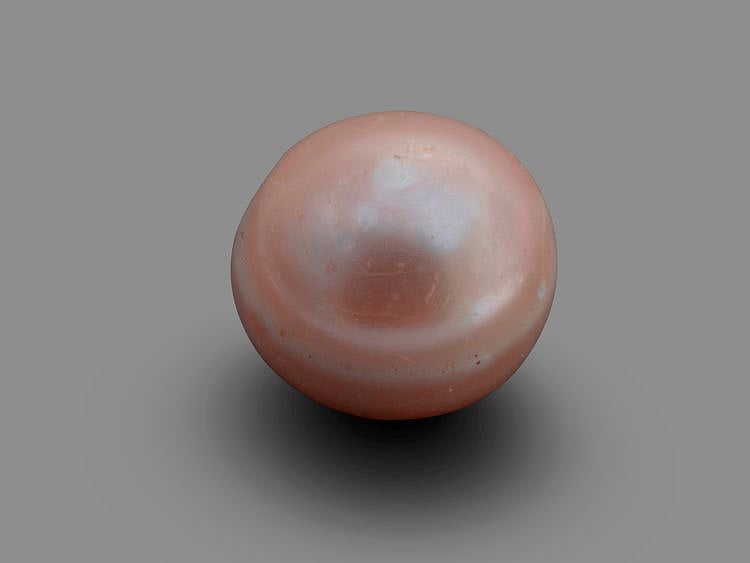World’s oldest known natural pearl discovered on Abu Dhabi island
Archaeologists working at Neolithic site on Marawah Island discovered the gem

ABU DHABI: The oldest known natural pearl in the world has been discovered by Department of Culture and Tourism — Abu Dhabi archaeologists working at a Neolithic site on Marawah Island, just off the coast of Abu Dhabi.
Dubbed the "Abu Dhabi Pearl", it was found in layers that have been radiocarbon dated to 5,800-5,600 BCE, during the Neolithic period.
The discovery is proof that pearls and oysters were being used in the UAE nearly 8,000 years ago, and represents the earliest known evidence for pearling yet discovered anywhere in the world.
Pearls were precious elements during the Neolithic period, certainly falling into the category of luxury and used for adornment.
The priceless and historically significant Abu Dhabi Pearl will feature in the upcoming Louvre Abu Dhabi exhibition '10,000 Years of Luxury', where it will be on display to the public for the very first time since its discovery.
Mohamed Khalifa Al Mubarak, Chairman of DCT Abu Dhabi, said: "The Abu Dhabi Pearl is a stunning find, testimony to the ancient origins of our engagement with the sea. The discovery of the oldest pearl in the world in Abu Dhabi makes it clear that so much of our recent economic and cultural history has deep roots that stretch back to the dawn of prehistory.
CE, BCE, BC, AD
Common Era (CE) is one of the notation systems for the world's most widely used calendar era. BCE (Before the Common Era or Before the Current Era) is the era before CE. BCE and CE are alternatives to the Dionysian BC and AD system, respectively. The Dionysian era distinguishes eras using AD (anno Domini, "[the] year of [the] Lord") and BC ("Before Christ"). The two notation systems are numerically equivalent: "2019 CE" corresponds to "AD 2019". "5,800 BCE" corresponds to "5,800 BC".
"Marawah Island is one of our most valuable archaeological sites, and excavations continue in the hope of discovering even more evidence of how our ancestors lived, worked and thrived."
Prior to the Abu Dhabi Pearl discovery, the earliest known pearl in the UAE came from a Neolithic site in Umm Al Qaiwain.
Ancient pearls
Ancient pearls have also been found at a Neolithic cemetery close to Jebel Buhais, in the Emirate of Sharjah. The carbon dating indicates that the Abu Dhabi Pearl is older than both these discoveries.
The Neolithic sites on the island of Marawah were first identified in 1992 during a survey carried out by the Abu Dhabi Islands Archaeological Survey (ADIAS).
Subsequent excavations have shown them to include numerous collapsed stone structures, the earliest architecture yet discovered in the UAE.
Aside from the priceless Abu Dhabi Pearl, significant finds from the key Marawah site have included an imported ceramic vase from the ‘Ubaid civilisation in Mesopotamia (Iraq), beautifully worked flint arrowheads and shell and stone beads.
Numerous painted plaster vessel fragments were also discovered and represent the earliest known decorative art yet discovered in the UAE.
At the beginning of 2020, a major new excavation will take place to uncover more of the settlement.
Trading in pearls
It has been suggested that ancient pearls were possibly traded with Mesopotamia in exchange for highly-decorated ceramics and other goods.
The finds at the Jebel Buhais cemetery suggest that pearls were also probably worn as jewellery by the local population.
The art of pearling required an in-depth knowledge of pearl beds and their locations and expert seafaring skills. Once these were mastered by the ancient inhabitants of Marawah, pearling was to remain a mainstay of the UAE’s economy for millennia.
The late 16th Century Venetian jeweller, Gasparo Balbi, who travelled through the region, mentions the islands off the coast of Abu Dhabi as a source of pearls.
The industry flourished until the 1930s.
The Abu Dhabi Pearl, on loan from the Zayed National Museum collection, will feature in the special exhibition "10,000 Years of Luxury", taking place at Louvre Abu Dhabi from October 30, 2019 to 18th February 2020.
Sign up for the Daily Briefing
Get the latest news and updates straight to your inbox
Network Links
GN StoreDownload our app
© Al Nisr Publishing LLC 2025. All rights reserved.